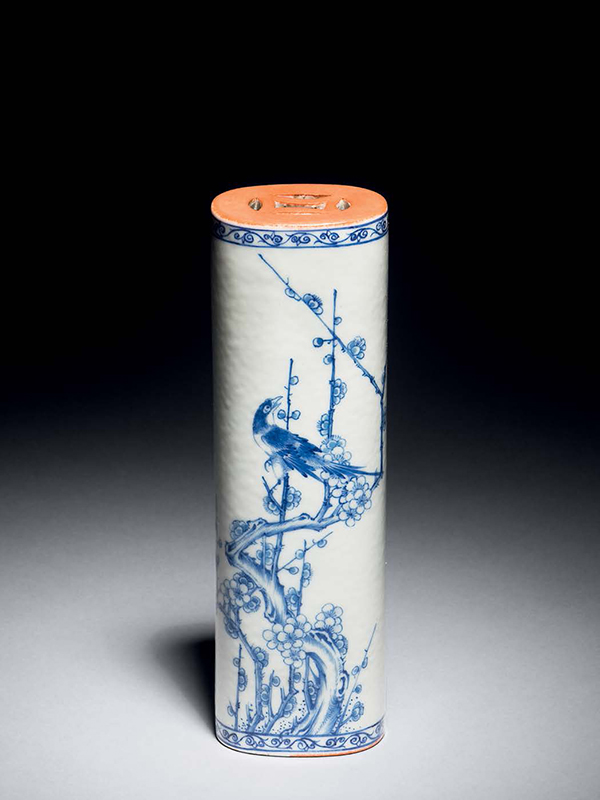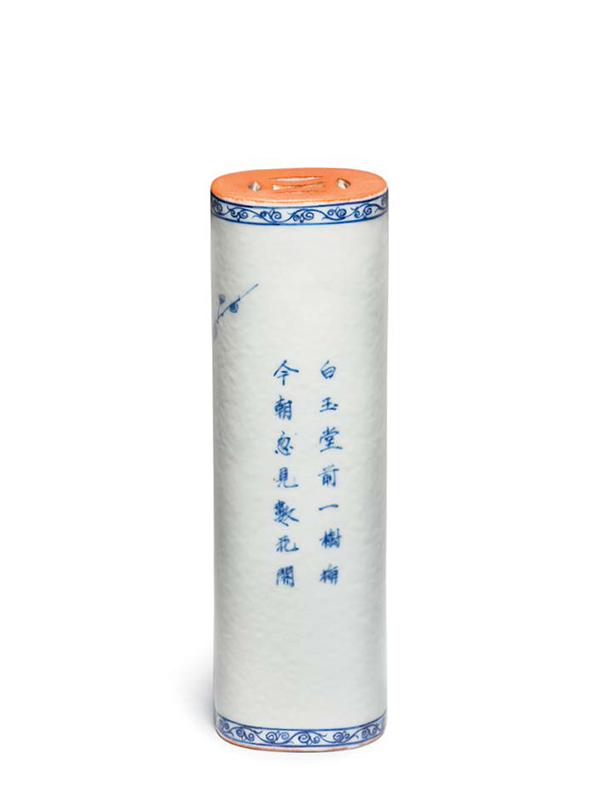Blue-and-white porcelain paperweight
A blue-and-white porcelain paperweight of oval cylindrical form. The front is painted in underglaze blue with a bird, probably a magpie, perching on top of a plum tree trunk with gnarled branches. The reverse is inscribed with fourteen characters in two lines, reading from the top right to the lower left “bai yu tang qian yi shu mei, jin chao hu jian shu hua kai” (there is a plum tree in front of the White Jade Hall, suddenly there are several plum blossoms that can be found on its branches this morning). The sides of the paperweight, carved in openwork with a coin pattern, are unglazed and painted in a bright orange enamel.
This charming porcelain paperweight was made for use on a scholar’s table and served either to hold open a scroll painting or to hold down papers. The two-line inscription comes from the Tang poem Chun Nu Yuan (resentment of a woman in spring) by Jiang Wei-Han, who was an officer during the Kaiyuan era (713–741) of the Tang Emperor Xuanzong. The painting on the paperweight depicts the scene of the first two lines of the poem. A magpie on top of a plum tree also means ‘may your joy reach up to the top of your eyebrows’ (xishang meishou), or a chirping magpie on a blossoming plum tree means ‘joyfully announcing the arrival of spring’ (xibao chunxian).[1]
- Tse Bartholomew, T. Hidden Meanings in Chinese Art, Asian Art Museum, San Francisco, 2006, 2.17.8 & 2.17.9, p. 52
青花喜上眉梢圖瓷鎮
清 十九世紀 長:16.5公分 寬:5公分 高:4公分
橢圓柱形紙鎮,青花瓷,一面以青花繪喜上眉梢圖,喜鵲高躍於梅樹梢,與綻放梅花相應成趣。
另一面以青花書唐朝開元進士蔣維翰《春女怨》 七絕詩中前兩句「白玉堂前一樹梅,今朝忽見
數花開 。」瓷鎮通體罩釉,惟兩側鏤空邊於素胎底上施橘紅磚彩。紙鎮為常見文房用具之一,本
品詩畫兼具,雅俗共賞。


